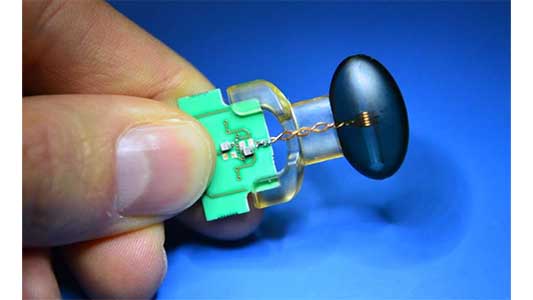The advancement of technology over the past few decades has been nothing short of revolutionary. Among the numerous breakthroughs, the development of sensors has played a pivotal role in bringing forth smart technology. From self-driving cars to wearable fitness trackers, sensors have become an essential part of our daily lives. One particular sensor technology that is gaining significant attention is the magnetic field sensor. These sensors are not only evolving but are also unlocking new possibilities for the future of smart devices and systems.
In 2024, the global magnetic field sensors market generated $6,224.80 million in sales. It is projected that the market for magnetic field sensors would increase at a 6.0% CAGR between 2025 and 2032. By 2032, the global magnetic field sensors market is expected to grow to a value of US$9,865.20 million.
What are Magnetic Field Sensors?
Magnetic field sensors are electronic devices that detect and measure the strength, direction, and proximity of magnetic fields. Essentially, they act as a bridge between the physical world and digital systems, capturing real-time magnetic information that can be translated into actionable data. These sensors are widely used to monitor changes in magnetic fields caused by external factors or moving objects, providing vital inputs for a wide range of applications.
The sensors work on the principle of magnetoresistance, which refers to the change in the electrical resistance of certain materials when subjected to a magnetic field. This phenomenon allows magnetic field sensors to detect variations in magnetic fields with high precision, enabling them to serve as the basis for various smart technologies.
Types of Magnetic Field Sensors
Magnetic field sensors are diverse in design and functionality. Broadly, they can be categorized into the following types:
- Hall Effect Sensors
The Hall effect is the most commonly used principle for magnetic field sensing. These sensors detect the presence of magnetic fields by measuring the voltage difference that occurs when a magnetic field is applied to a conductor carrying current. Hall Effect sensors are widely used in automotive applications, industrial equipment, and consumer electronics. - Giant Magnetoresistive (GMR) Sensors
GMR sensors operate on the principle of giant magnetoresistance, where the resistance of a material changes significantly when exposed to a magnetic field. They are often employed in data storage systems, particularly in hard disk drives (HDDs), and are also found in automotive and industrial applications. - Anisotropic Magnetoresistive (AMR) Sensors
AMR sensors detect the variation in resistance caused by the alignment of magnetic domains in a material when exposed to an external magnetic field. These sensors are used in automotive applications, such as wheel speed sensors and position sensing. - Magnetoimpedance Sensors
Magnetoimpedance sensors measure the change in impedance (resistance and reactance) of a material when exposed to a magnetic field. These sensors are gaining popularity in applications requiring high precision and are used in the automotive and aerospace industries. - Fluxgate Sensors
Fluxgate sensors use a magnetic core to measure the intensity of the magnetic field. They are highly accurate and sensitive, making them ideal for precise applications such as geomagnetic surveys and navigation.
Applications of Magnetic Field Sensors
The potential of magnetic field sensors stretches across multiple industries, enabling smarter systems that are more efficient, responsive, and intuitive. Below, we explore some of the most impactful applications of this technology.
1. Automotive Industry
One of the most significant applications of magnetic field sensors is in the automotive sector. These sensors are used extensively in the design of electric and hybrid vehicles, as well as in traditional internal combustion engine (ICE) vehicles. In electric motors, for example, Hall effect sensors are used to monitor the position of the rotor, ensuring optimal performance and energy efficiency.
Furthermore, magnetic sensors are vital for advanced driver assistance systems (ADAS). Magnetic field sensors can help detect the proximity of obstacles or other vehicles, supporting functions like collision avoidance, parking assistance, and adaptive cruise control.
Magnetic sensors also enhance safety and convenience features such as wheel speed sensing, steering angle detection, and airbag deployment systems. As electric vehicles (EVs) become more widespread, the demand for magnetic field sensors will only continue to grow.
2. Healthcare and Wearable Devices
Magnetic field sensors are finding increasing use in the healthcare industry, particularly in the realm of wearables. From fitness trackers to advanced medical monitoring systems, magnetic field sensors play a crucial role in tracking motion, orientation, and even the functioning of internal organs.
For example, magnetic field sensors are used in devices that monitor brain activity, such as magnetoencephalography (MEG) machines. These sensors help in mapping the magnetic fields generated by neuronal activity, providing critical insights for diagnosing and treating neurological disorders.
In fitness wearables, magnetic sensors are used to track the movement of the body, measuring parameters such as steps taken, posture, and gait analysis. Additionally, magnetic sensors are also crucial for implantable devices like pacemakers, where they detect the position and function of the device inside the body, ensuring it operates safely.
3. Consumer Electronics
In the world of consumer electronics, magnetic field sensors are already embedded in various devices. For example, magnetic sensors are used in smartphones to detect the orientation of the screen. When you flip your phone, the magnetic sensor helps it recognize the change and automatically adjust the screen display.
Similarly, magnetic sensors are widely used in gaming controllers, where they track the movements and position of the device in three-dimensional space. This enables more immersive gaming experiences, as the sensors can accurately detect the user’s actions.
In the future, we can expect to see even more applications of magnetic sensors in emerging technologies such as virtual reality (VR) and augmented reality (AR), where precise motion tracking is essential.
4. Industrial Automation and Robotics
Industrial automation and robotics are undergoing a massive transformation, thanks in part to the integration of magnetic field sensors. These sensors provide precise position and movement feedback for robotic arms, conveyor belts, and other automated systems. By using magnetic field sensors, machines can perform tasks with a higher degree of accuracy, minimizing human error and improving productivity.
In addition, magnetic field sensors are used in motors to monitor speed, torque, and other parameters, ensuring that the system operates within safe limits. This is particularly important in high-stakes environments such as manufacturing, where even small errors can result in significant losses.
5. Energy and Power Systems
Magnetic field sensors are also playing an important role in the energy sector, particularly in the monitoring and management of electrical grids and renewable energy systems. These sensors can help detect faults in power lines, transformers, and other components of the energy infrastructure, enabling quicker response times and reducing the risk of power outages.
Moreover, magnetic field sensors are used in energy harvesting systems, which capture ambient energy from the environment and convert it into usable power. In combination with other sensors and smart technologies, magnetic sensors help create more sustainable and efficient energy systems.
The Future of Magnetic Field Sensors
As the world moves toward greater automation, AI-driven systems, and interconnected devices, the role of magnetic field sensors will only grow. Their precision, low power consumption, and versatility make them ideal candidates for a wide range of smart technology applications.
In the near future, we may see magnetic field sensors integrated into even more devices, making them smarter and more responsive. For example, advancements in sensor fusion (combining data from multiple sensors) will allow magnetic field sensors to work in tandem with other types of sensors, such as accelerometers, gyroscopes, and pressure sensors, to provide more accurate and holistic data.
In addition, the miniaturization of magnetic field sensors will enable their use in even more compact and portable devices, opening up possibilities in areas like smart packaging, logistics, and even biomedical implants.
Conclusion
Magnetic field sensors are at the forefront of the next wave of smart technology. As we have seen, these sensors are enabling innovations across a wide range of industries, from automotive and healthcare to consumer electronics and industrial automation. The ability to measure and interpret magnetic fields with incredible precision is helping to make systems smarter, more efficient, and more intuitive.
As we move into a future defined by the Internet of Things (IoT), artificial intelligence, and connected devices, magnetic field sensors will undoubtedly play a critical role in shaping the technologies that will define our world. The future of smart technology is magnetic—and it’s only just beginning.












